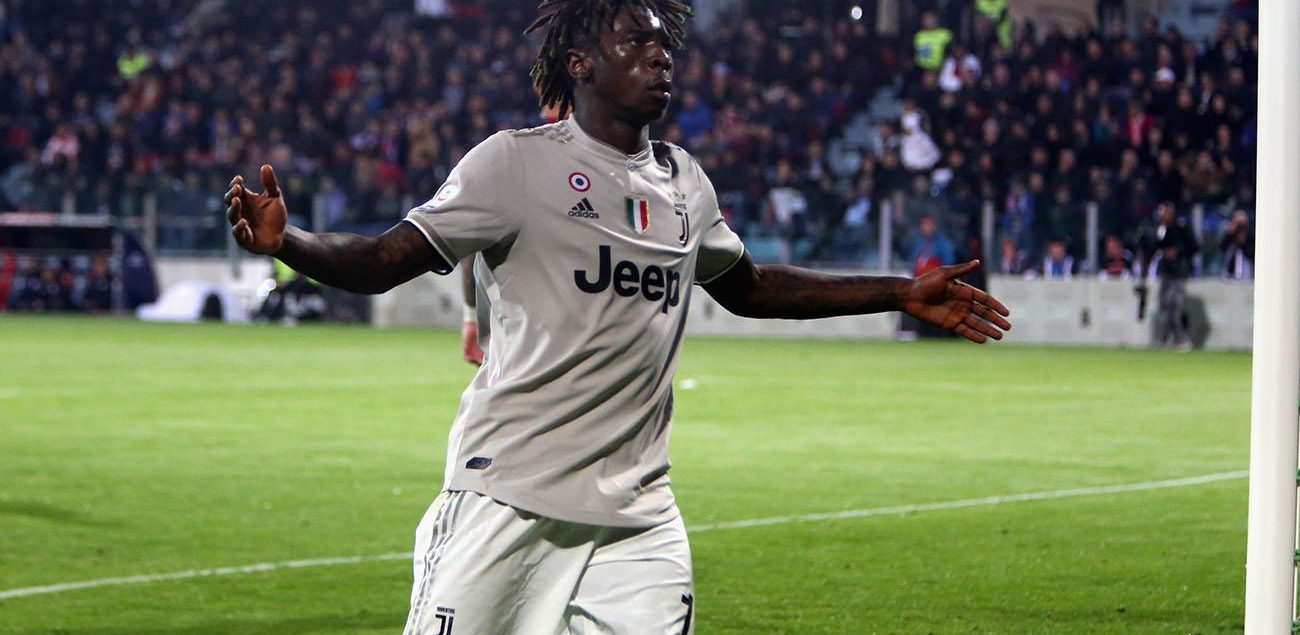Raheem Sterling and Eniola Aluko–and how social media can help combat racism
The way Juventus have handled both Cristiano Ronaldo’s rape allegations and this week’s debacle surrounding Moise Kean has been appalling in every way. Not only did the Old Lady’s representatives unequivocally support their number seven – hailing him as a ‘great champion’ despite the evidence against him regarding the accusations made by Kathryn Mayorga – but many players failed to stand up for their own teammate, Kean, when he needed them most in the face of unrelenting racist chants.
Yet with all the initial backlash on all parties concerned, and with newspapers putting the spotlight on the ensuing ramifications, one thing that wasn’t considered was the influence that Cristiano and Leonardo Bonucci had on teenagers and children watching the drama unfold.
Moments like these from such high-profile clubs can be especially dangerous because children who grow up idolizing these athletes see them treating each other with such overt bigotry. What’s even more hazardous is that they see this behaviour being praised – as evident in the example of the tweet posted by the official Juventus social media account.
“Cristiano Ronaldo has shown in recent months his great professionalism and dedication, which is appreciated by everyone at Juventus. The events allegedly dating back to almost 10 years ago do not change this opinion, which is shared by anyone who has come into contact with this great champion.”
Tweets like this allow a cycle of normalised discrimination to develop from an early age in their lives.
Which is why social media may be the best platform to begin the charge against racism and sexism – the platform that today’s youth spend a large majority of their time on, whether that be Instagram, Twitter, Facebook or Snapchat. By educating children from a young age, we have a chance of ensuring that the cycle doesn’t form and that they learn early on why speaking out against gender and racial discrimination is so crucial.
And the stats certainly prove that social media is a platform that the youth of today have built their lives around. According to an article written in 2016 by Amanda Lenhart on social media use and online activity, 76% of teenagers use social media on a daily basis. Upon further analysis, Lenhart found that Facebook was used most often by the bulk of teens, with Twitter used by 33%.
So if social media is such a dominant factor in influencing adolescents, can it be used to help challenge the status quo and educate them about gender and racial discrimination?
It may be the case for teenagers, where social media could be used to implement change at an age where they are at their most susceptible.
Indeed, in a study conducted by the National Institution of Mental Health, child psychiatrist Jay Giedd described the teen brain as ‘extremely responsive’ and therefore more likely to internalise external actions. This can be a risky pairing and lead to reckless behaviours such as racist chanting or cyber abuse.
However, Giedd also found out that the teen brain was also very ‘sensitive’ to actions that led to rewards. He proved that although there was a capacity for reckless behaviour to be carried out, teenagers were more likely to emulate behaviour that had a positive outcome.
As mentioned before, this can be manipulated by high-profile clubs like Juventus into supporting the perpetrators accused of racial or gender discrimination. However, using social media as a tool could lead to more positive behaviour being reinforced – such as Kean standing up against racism and receiving plaudits on multiple social media platforms for it.
Giedd’s research proved that while we may not be able to prevent the racial and sexual prejudice from occurring, what’s important is that we have the power now to use technology as a tool to ensure it doesn’t imprint on the lives of impressionable young kids.
By shifting the teenage audience’s attention to the positive side-effects of those standing up against it through social media, the data proves that this will reap the most beneficial results later on in their lives.
And with the likes of Raheem Sterling and Eniola Aluko – revered role models in their respective leagues – tweeting and posting their support of Kean, more and more adolescents will have a positive figure in their lives to remind them why gender or race should never be the cause of prejudice.
Yet there remains a lot of scepticism around this concept, with many suggesting that social media alone is not enough to make a difference in the hectic lives of teenagers. Yes, there are many other ways we can help ensure young people don’t fall into an environment where racism and sexism are prevalent. School education, community sessions and political movements could make little changes that add up.
Yet in an era where social media is used so frequently, what better tool to connect and unite in the face of discrimination by teaching teenagers on a platform they are likely to want to communicate on?
So, while it may require more rigorous incentives to ask athletes to think before they act, what we really need to focus on is the tool that we have in our hands that can be a powerful influencer for the youth of today.
If we can use social media to help defer teenagers from gender and racial discrimination early on in our lives, then there may be proof that technology could be the way forward in breaking the cycle of overt prejudice.
The risk? Not everyone will be on board, as with any concept that challenges the status quo. But the reward? We could be one step closer to stamping out the bigotry that continues to mar football.
By: Maryam Naz
